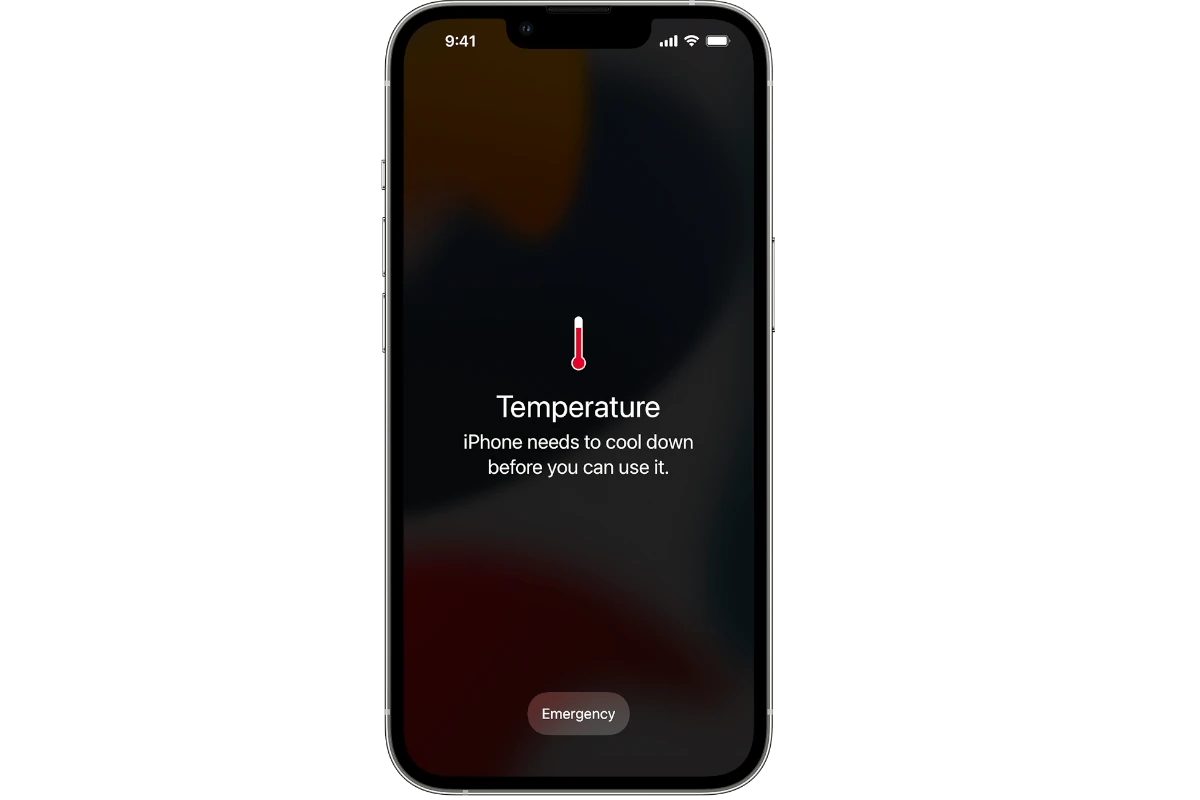Phone overheating is a common issue that can cause concern for many users. An overheated phone is often caused by excessive use, background apps running, or exposure to high temperatures. This problem can lead to reduced battery life, slower performance, and potential damage to internal components if left unchecked.
Recognizing the signs of an overheating phone is crucial. These may include a hot exterior, sudden shutdowns, or sluggish operation. Taking immediate action when these symptoms occur can prevent long-term damage and extend the lifespan of your device.
Fortunately, there are simple steps to cool down an overheated phone. Removing the case, closing unnecessary apps, and avoiding direct sunlight can help reduce temperature quickly. For persistent issues, checking for software updates or consulting with a professional may be necessary.
Keeping Your Cool: Why Your Phone Overheats
A hot phone is an unhappy phone. Overheating can damage your phone’s battery, slow down performance, and even cause it to shut down unexpectedly. Here’s a look at some common reasons your phone might be getting too hot and what you can do about it.
1. Demanding Apps and Games
Running demanding apps and graphics-heavy games puts a lot of stress on your phone’s processor. This generates heat.
- Solution: Close apps you’re not using and take breaks when playing games.
2. Streaming for Long Periods
Streaming videos or music for extended periods also taxes your phone’s processor and can lead to overheating.
- Solution: Reduce screen brightness and volume, or download content for offline viewing.
3. Software Updates
Software updates can sometimes cause temporary overheating as your phone works to install the new software.
- Solution: Allow your phone to complete the update and cool down afterward.
4. Direct Sunlight and Hot Environments
Leaving your phone in direct sunlight or a hot car can cause it to overheat quickly.
- Solution: Keep your phone in the shade and avoid exposing it to extreme temperatures.
5. Battery Issues
An old or damaged battery can overheat. Charging your phone with a faulty charger can also generate excess heat.
- Solution: Have your battery checked and use the charger that came with your phone.
6. Background Activity
Apps running in the background can consume resources and generate heat.
- Solution: Close unused apps and limit background app refresh in your phone’s settings.
7. Poor Network Connection
When your phone struggles to find a signal, it works harder and generates more heat.
- Solution: If possible, move to an area with a better signal or connect to Wi-Fi.
8. Case Obstruction
Some phone cases can trap heat.
- Solution: Remove your phone case temporarily to allow for better heat dissipation.
9. Malware
Malware can cause your phone to work overtime, leading to overheating.
- Solution: Install reputable antivirus software and avoid downloading apps from untrusted sources.
When to Seek Professional Help
If your phone overheats frequently or excessively, even without heavy use, it’s best to have it checked by a professional. There might be an underlying hardware issue that needs to be addressed.
Tips to Prevent Overheating
Here’s a table summarizing the causes and solutions for phone overheating:
| Cause | Solution |
|---|---|
| Demanding apps and games | Close unused apps, take breaks |
| Streaming | Reduce brightness, download content |
| Software Updates | Let the update complete |
| Direct sunlight | Keep phone in the shade |
| Battery issues | Check battery health, use the correct charger |
| Background activity | Close apps, limit background refresh |
| Poor network connection | Move to an area with better signal, use Wi-Fi |
| Phone case | Remove case temporarily |
| Malware | Install antivirus software |
By understanding the common causes of phone overheating and taking preventive measures, you can help your phone stay cool and perform at its best.
Maximizing Your Phone’s Battery Life
Since overheating can significantly impact your phone’s battery health, it’s important to know how to maximize your battery life. Here are a few tips:
- Enable Battery Saver Mode: Most phones have a battery saver mode that limits background activity and reduces performance to conserve power.
- Adjust Screen Brightness: Lowering your screen brightness can significantly extend battery life.
- Turn off Location Services: When not in use, disable location services for apps.
- Manage Notifications: Limit notifications from apps that you don’t need to hear from constantly.
- Keep Software Updated: Software updates often include optimizations that improve battery life.
Key Takeaways
- Overheating can result from heavy usage, background processes, or environmental factors
- Symptoms include a hot exterior, sudden shutdowns, and slow performance
- Simple solutions like closing apps and avoiding heat sources can prevent overheating
Understanding Phone Overheating
Phone overheating is a common issue that can affect device performance and lifespan. Heat buildup in smartphones stems from various sources and can lead to potential damage if not addressed.
Common Causes of Overheating
Direct sunlight exposure is a major culprit in phone overheating. Leaving devices on car dashboards or outdoor tables can quickly raise temperatures. High-intensity apps, like games or video editors, also generate significant heat.
Faulty batteries or charging cables can cause excessive warmth. Old or damaged batteries may overheat during normal use or charging. Software issues, including buggy apps or malware, can force processors to work harder, increasing heat output.
Environmental factors play a role too. Using phones in hot climates or enclosed spaces limits heat dissipation. Phone cases, while protective, can trap heat and hinder cooling.
Technical Factors Behind Overheating
Processors generate heat as they perform tasks. When running demanding apps or multiple programs, CPUs work harder and produce more heat. Graphics-intensive activities strain GPUs, further raising temperatures.
Battery charging creates heat through chemical reactions. Fast charging, while convenient, generates more heat than standard charging methods. Software updates can sometimes cause temporary spikes in processor usage, leading to increased warmth.
Screen brightness and cellular signal strength affect heat production. Bright displays and weak signals make components work harder. Background processes, like app updates or syncing, can tax the system and raise temperatures even when the phone isn’t actively used.
Preventive Measures and Solutions
Phone overheating can be addressed through quick fixes and long-term strategies. These methods help maintain optimal device performance and extend battery life.
Immediate Actions to Cool Down Your Phone
Remove the phone case to improve heat dissipation. Lower screen brightness to reduce power consumption. Move the device to a cooler environment, away from direct sunlight or heat sources. Close unnecessary apps running in the background. Avoid using the phone while it’s charging.
Turn on battery saver mode to limit power-intensive functions. Restart the phone to clear temporary files and refresh the system. If possible, remove the battery for a few minutes to allow it to cool down.
Consider using a phone cooler accessory for faster temperature reduction. Avoid using the device for demanding tasks like gaming or video streaming until it cools down.
Long-Term Strategies for Maintaining Phone Health
Keep your phone’s software up to date. Regular updates often include optimizations that improve device efficiency and reduce overheating risks. Avoid using third-party chargers, as they may not regulate power input properly.
Manage app usage by uninstalling unused apps and restricting background processes. Use airplane mode when in areas with poor signal to prevent the phone from constantly searching for a connection.
Clean the charging port regularly to ensure proper power transfer. Consider replacing the battery if it’s old or showing signs of degradation. Avoid exposing the phone to extreme temperatures for extended periods.
Set up automatic app updates to ensure all apps are running their latest, most efficient versions. Use built-in device maintenance tools to optimize performance and clear unnecessary data.
Frequently Asked Questions
Phone overheating can stem from various causes and impact different smartphone models. Users often encounter this issue and seek solutions to prevent damage and maintain optimal performance.
What can cause an iPhone to overheat?
iPhones may overheat due to intense processor usage, exposure to direct sunlight, or charging with a non-Apple charger. Background apps running continuously can also lead to excessive heat generation.
Faulty batteries or software glitches sometimes contribute to overheating issues. Updating iOS to the latest version can often resolve software-related heat problems.
How can I prevent my Samsung phone from overheating?
To prevent Samsung phone overheating, avoid using the device while charging. Keep the phone out of direct sunlight, especially on hot days.
Close unused apps and disable unnecessary background processes. Remove thick cases that trap heat. Regularly update the phone’s software to ensure optimal performance.
Why does my phone get hot and drain the battery quickly?
Excessive heat and rapid battery drain often go hand-in-hand. This can occur due to resource-intensive apps, poor network connectivity, or malware infections.
A worn-out battery may also cause these issues. Check for apps consuming high amounts of power in the battery settings and consider limiting their usage.
What should be done when a phone overheats while charging?
If a phone overheats during charging, immediately unplug it and let it cool down. Remove any case or cover to improve heat dissipation.
Avoid using the phone while it’s cooling. Check the charging cable and adapter for damage. If the problem persists, consider using a different charger or having the device inspected by a professional.
What are the steps to cool down an overheated Android phone?
To cool down an overheated Android phone, first turn it off and remove it from any heat source. Take off the case to allow better air circulation.
Place the phone in a cool, dry area. Avoid putting it in the refrigerator, as rapid temperature changes can damage internal components.
Are there risks involved with a smartphone that consistently gets hot?
Consistent overheating can lead to long-term damage to a smartphone’s battery, processor, and other components. It may result in decreased performance, shorter battery life, or even permanent hardware failure.
Frequent overheating can also pose safety risks, such as battery swelling or, in extreme cases, fire hazards. Regular maintenance and addressing persistent heat issues promptly are crucial for device longevity and user safety.







